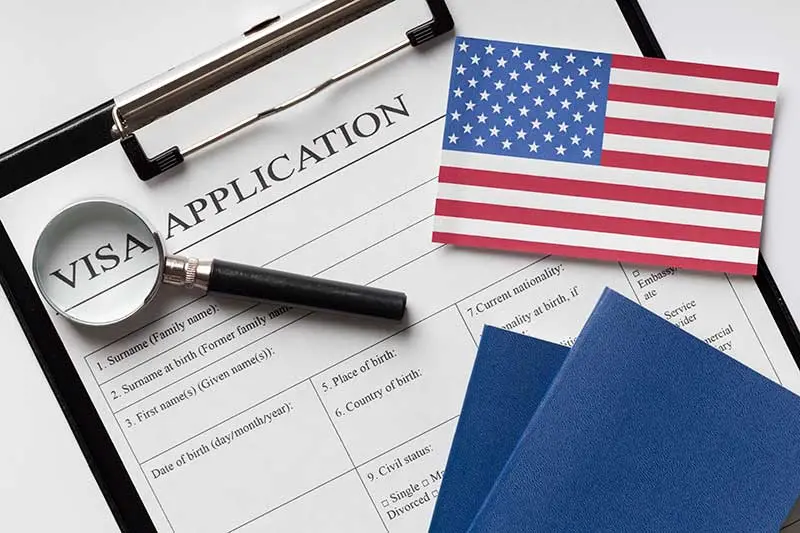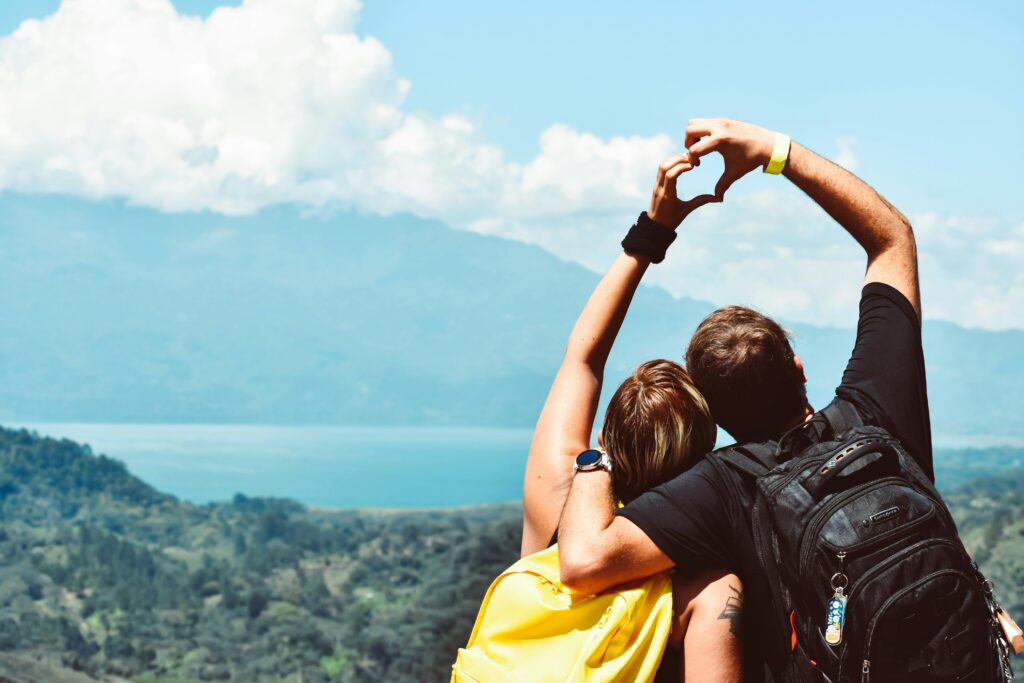Opciones de Visa de Trabajo en EE.UU. para Ingenieros de Automatización
¿Eres un ingeniero en automatización con más de 10 años de experiencia y estás buscando oportunidades laborales en los Estados Unidos? Navegar por las opciones de visas de trabajo en EE.UU. para ingenieros en automatización puede parecer un desafío complejo, pero es un paso crucial para avanzar en tu carrera y asegurar un futuro estable para tu familia.
En este artículo, exploraremos las diversas opciones de visas de trabajo disponibles, incluyendo las visas H-1B, L-1 y O-1. Cada una de estas visas tiene sus propios requisitos y beneficios, y es fundamental entender cuál se adapta mejor a tu situación profesional y personal. A lo largo del artículo, te proporcionaremos información detallada y consejos prácticos para ayudarte a tomar decisiones informadas.
La visa H-1B, por ejemplo, es una opción popular para ocupaciones especializadas, mientras que la visa L-1 es ideal para transferencias dentro de una misma empresa. También discutiremos la visa O-1, destinada a individuos con habilidades extraordinarias. Además, te mostraremos cómo Cortes Immigration Law Firm puede guiarte en cada paso del proceso, asegurando que tu solicitud sea sólida y bien fundamentada.
Prepararte adecuadamente y elegir la visa correcta no solo te permitirá trabajar legalmente en EE.UU., sino que también puede abrirte puertas a oportunidades de crecimiento profesional y estabilidad a largo plazo. Con el apoyo de expertos en inmigración, podrás navegar este proceso con confianza y claridad.
Acompáñanos mientras profundizamos en las opciones de visas de trabajo en EE.UU. para ingenieros en automatización y descubre cómo puedes hacer realidad tu sueño americano.
Visa H-1B: Oportunidades para Ocupaciones Especializadas
La visa H-1B es una de las opciones más populares para los ingenieros de automatización que desean trabajar en los Estados Unidos. Esta visa está diseñada específicamente para ocupaciones especializadas que requieren conocimientos altamente especializados, lo que la hace ideal para profesionales en el campo de la automatización.
Para calificar para una visa H-1B, los candidatos deben tener al menos un título de licenciatura o su equivalente en su campo de especialidad. Además, la visa H-1B permite la ‘doble intención’, lo que significa que los titulares pueden buscar la residencia permanente mientras están en esta visa temporal.
Requisitos y Proceso de Solicitud
El proceso de solicitud de la visa H-1B puede ser competitivo debido al límite anual de visas disponibles. Para aumentar las posibilidades de aprobación, es fundamental cumplir con todos los requisitos y presentar una solicitud sólida. Los pasos básicos incluyen:
- Obtener una oferta de trabajo de un empleador estadounidense que esté dispuesto a patrocinar la visa H-1B.
- Demostrar que el puesto requiere conocimientos especializados y que el candidato posee las calificaciones necesarias.
- Completar y presentar el formulario de solicitud de visa H-1B (Formulario I-129) junto con la documentación de respaldo.
- Participar en una entrevista en la embajada o consulado de EE.UU., si es necesario.
Ejemplos de Casos Exitosos
Muchos ingenieros de automatización han logrado obtener la visa H-1B y avanzar en sus carreras en los Estados Unidos. Por ejemplo, Juan Pérez, un ingeniero de automatización de Brasil, obtuvo una visa H-1B después de ser contratado por una empresa de tecnología en Silicon Valley. Gracias a su experiencia y conocimientos especializados, pudo demostrar su valor para la empresa y asegurar su visa.
Otro caso es el de María Gómez, una ingeniera de automatización de Colombia, que fue contratada por una multinacional con sede en Nueva York. Su sólida formación académica y experiencia en proyectos internacionales fueron clave para su aprobación de la visa H-1B.
Estadísticas y Demanda de la Visa H-1B
La demanda de visas H-1B es alta, especialmente en sectores tecnológicos y de ingeniería. Según el Servicio de Ciudadanía e Inmigración de los Estados Unidos (USCIS), se reciben anualmente más solicitudes de las que se pueden aprobar debido al límite de 85,000 visas H-1B disponibles cada año. De estas, 20,000 están reservadas para aquellos con títulos de posgrado de instituciones estadounidenses.
Para los ingenieros de automatización, la competencia puede ser intensa, pero con una preparación adecuada y el apoyo de un buen abogado de inmigración, las posibilidades de éxito aumentan significativamente.
Pasos para Aumentar las Posibilidades de Aprobación
Para mejorar las posibilidades de obtener una visa H-1B, considera los siguientes pasos:
- Busca empleadores que tengan experiencia en patrocinar visas H-1B y que comprendan el valor de tus habilidades especializadas.
- Prepara una solicitud detallada y bien documentada que destaque tu experiencia, educación y cómo tu trabajo beneficiará a la empresa y al mercado laboral estadounidense.
- Consulta con un abogado de inmigración especializado en visas H-1B para asegurarte de que todos los aspectos de tu solicitud estén en orden.
- Aplica lo antes posible, ya que las visas H-1B se otorgan por orden de llegada y el proceso puede cerrarse rápidamente debido a la alta demanda.
En resumen, la visa H-1B ofrece una excelente oportunidad para los ingenieros de automatización que buscan avanzar en sus carreras en los Estados Unidos. Con una preparación adecuada y el apoyo de expertos en inmigración, puedes navegar el proceso de solicitud con confianza y aumentar tus posibilidades de éxito.
Visa L-1: Transferencias Dentro de la Empresa
La visa L-1 es una opción excelente para ingenieros de automatización que ya trabajan para una empresa con oficinas en EE.UU. Esta visa facilita la transferencia de empleados de una sucursal extranjera a una oficina estadounidense, permitiendo a las empresas multinacionales aprovechar el talento global. Existen dos tipos de visas L-1: L-1A para gerentes y ejecutivos, y L-1B para empleados con conocimientos especializados.
La visa L-1 no solo permite a los ingenieros de automatización continuar su carrera en un nuevo país, sino que también ofrece una vía para la residencia permanente en EE.UU. Además, no está sujeta a un límite anual, lo que la convierte en una opción atractiva para muchas empresas y empleados.
Tipos de Visa L-1
La visa L-1A está destinada a gerentes y ejecutivos que han trabajado para la empresa al menos un año en los últimos tres años. Estos individuos deben asumir un rol gerencial o ejecutivo en la oficina estadounidense. Por otro lado, la visa L-1B es para empleados con conocimientos especializados que son esenciales para la operación de la empresa en EE.UU.
Ambos tipos de visas permiten a los titulares traer a sus familiares inmediatos (cónyuge e hijos solteros menores de 21 años) bajo la visa L-2. Los cónyuges pueden solicitar autorización de empleo, lo que añade un beneficio significativo para las familias.
Requisitos y Proceso de Solicitud
Para obtener una visa L-1, se deben cumplir ciertos requisitos:
- El empleado debe haber trabajado para la empresa en el extranjero durante al menos un año en los últimos tres años.
- La empresa debe tener una relación calificada con la oficina en EE.UU., como una filial, subsidiaria, o sucursal.
- El empleado debe asumir un rol gerencial, ejecutivo, o poseer conocimientos especializados.
El proceso de solicitud incluye la presentación del Formulario I-129, Petición de Trabajador No Inmigrante, junto con la documentación de respaldo que demuestre la relación entre las oficinas y las calificaciones del empleado.
Ejemplos de Empresas y Casos Exitosos
Muchas empresas multinacionales utilizan la visa L-1 para transferir a sus empleados clave a EE.UU. Por ejemplo, Siemens, una empresa líder en automatización industrial, ha transferido a numerosos ingenieros de automatización a sus oficinas en EE.UU. utilizando la visa L-1. Estos ingenieros han sido fundamentales para la implementación de proyectos complejos y la transferencia de conocimientos técnicos.
Otro caso exitoso es el de ABB, una empresa suiza de tecnología, que ha utilizado la visa L-1 para traer a expertos en automatización a sus instalaciones en EE.UU., mejorando así su capacidad de innovación y desarrollo de productos.
Estadísticas y Demanda de la Visa L-1
La visa L-1 es una opción popular entre las empresas multinacionales. Según el Servicio de Ciudadanía e Inmigración de los Estados Unidos (USCIS), se aprueban miles de visas L-1 cada año, con una alta tasa de éxito para las empresas que cumplen con los requisitos. La flexibilidad y los beneficios de esta visa la convierten en una opción atractiva para ingenieros de automatización que buscan avanzar en sus carreras en EE.UU.
En resumen, la visa L-1 ofrece una excelente oportunidad para los ingenieros de automatización que desean transferirse a las oficinas de su empresa en EE.UU. Con una preparación adecuada y el apoyo de expertos en inmigración, este proceso puede ser una vía efectiva para el crecimiento profesional y la estabilidad a largo plazo.
Visas EB-2 y EB-3: Opciones para la Residencia Permanente
Para los ingenieros de automatización que buscan establecerse permanentemente en los Estados Unidos, las visas EB-2 y EB-3 representan opciones viables y atractivas. Estas visas están diseñadas para profesionales altamente calificados y ofrecen una vía hacia la residencia permanente, también conocida como la tarjeta verde.
La visa EB-2 es ideal para aquellos con un título avanzado o habilidades excepcionales en su campo, mientras que la visa EB-3 está disponible para trabajadores calificados, profesionales y otros trabajadores. A continuación, exploraremos en detalle los requisitos, procesos y beneficios de cada una de estas visas.
Visa EB-2: Profesionales con Título Avanzado o Habilidades Excepcionales
La visa EB-2 está destinada a profesionales que poseen un título avanzado (como una maestría o doctorado) o que pueden demostrar habilidades excepcionales en ciencias, artes o negocios. Para los ingenieros de automatización, esta visa es una excelente opción si tienen un título avanzado en ingeniería o un campo relacionado, o si pueden demostrar que sus habilidades son significativamente superiores a las de sus colegas.
Para calificar para una visa EB-2, los solicitantes deben cumplir con ciertos requisitos:
- Tener una oferta de trabajo de un empleador estadounidense.
- Obtener una Certificación Laboral del Departamento de Trabajo de EE.UU., a menos que se aplique una Exención por Interés Nacional (NIW, por sus siglas en inglés).
- Demostrar que el trabajo propuesto requiere un título avanzado o habilidades excepcionales.
La Exención por Interés Nacional puede ser una ventaja significativa para aquellos cuya labor se considera de gran importancia para los Estados Unidos. Esta exención permite a los solicitantes omitir el requisito de la oferta de trabajo y la certificación laboral si pueden demostrar que su trabajo es de interés nacional.
Visa EB-3: Trabajadores Calificados, Profesionales y Otros Trabajadores
La visa EB-3 es una opción más amplia que incluye tres categorías: trabajadores calificados, profesionales y otros trabajadores. Para los ingenieros de automatización, la categoría de trabajador calificado es la más relevante, ya que requiere al menos dos años de experiencia laboral en el campo.
Los requisitos para la visa EB-3 incluyen:
- Tener una oferta de trabajo permanente y a tiempo completo de un empleador estadounidense.
- Obtener una Certificación Laboral del Departamento de Trabajo de EE.UU.
- Demostrar que el puesto requiere al menos dos años de formación o experiencia laboral.
Aunque el proceso de solicitud para la visa EB-3 puede ser más largo debido a la alta demanda, sigue siendo una opción viable para aquellos que buscan establecerse en los Estados Unidos a largo plazo.
Ejemplos de Casos Exitosos
Muchos ingenieros de automatización han logrado obtener la residencia permanente a través de las visas EB-2 y EB-3. Por ejemplo, Carlos Silva, un ingeniero de automatización de México, obtuvo una visa EB-2 gracias a su doctorado en ingeniería y su trabajo innovador en la automatización de procesos industriales. Su empleador estadounidense pudo demostrar que su trabajo era de gran importancia para el desarrollo tecnológico del país, lo que facilitó la aprobación de su visa.
Otro caso exitoso es el de Ana Martínez, una ingeniera de automatización de España, que obtuvo una visa EB-3 después de ser contratada por una empresa de manufactura en Texas. Con más de cinco años de experiencia en su campo, Ana pudo demostrar que sus habilidades eran esenciales para la operación de la empresa, lo que resultó en la aprobación de su visa y su eventual residencia permanente.
Estadísticas y Demanda de las Visas EB-2 y EB-3
Según el Servicio de Ciudadanía e Inmigración de los Estados Unidos (USCIS), las visas EB-2 y EB-3 son altamente demandadas debido a la creciente necesidad de profesionales calificados en el mercado laboral estadounidense. En los últimos años, se ha observado un aumento en las solicitudes de estas visas, especialmente en sectores tecnológicos y de ingeniería.
Para los ingenieros de automatización, la competencia puede ser intensa, pero con una preparación adecuada y el apoyo de un buen abogado de inmigración, las posibilidades de éxito aumentan significativamente. Es crucial presentar una solicitud bien documentada que demuestre claramente las calificaciones y la importancia del trabajo propuesto.
Pasos para Aumentar las Posibilidades de Aprobación
Para mejorar las posibilidades de obtener una visa EB-2 o EB-3, considera los siguientes pasos:
- Busca empleadores que tengan experiencia en patrocinar visas de residencia permanente y que comprendan el valor de tus habilidades especializadas.
- Prepara una solicitud detallada y bien documentada que destaque tu experiencia, educación y cómo tu trabajo beneficiará a la empresa y al mercado laboral estadounidense.
- Consulta con un abogado de inmigración especializado en visas EB-2 y EB-3 para asegurarte de que todos los aspectos de tu solicitud estén en orden.
- Considera la posibilidad de aplicar para una Exención por Interés Nacional si tu trabajo tiene un impacto significativo en los Estados Unidos.
En resumen, las visas EB-2 y EB-3 ofrecen excelentes oportunidades para los ingenieros de automatización que buscan establecerse permanentemente en los Estados Unidos. Con una preparación adecuada y el apoyo de expertos en inmigración, puedes navegar el proceso de solicitud con confianza y aumentar tus posibilidades de éxito.
Elige la Mejor Opción de Visa para tu Carrera en EE.UU.
En resumen, explorar las opciones de visa de trabajo en EE.UU. para ingenieros de automatización es esencial para avanzar en tu carrera y asegurar un futuro estable para tu familia. Desde la popular visa H-1B para ocupaciones especializadas, hasta la visa L-1 para transferencias dentro de la empresa, y las visas EB-2 y EB-3 para la residencia permanente, cada una ofrece beneficios únicos y requisitos específicos.
Es crucial elegir la visa que mejor se adapte a tu situación profesional y personal. La visa H-1B es ideal para aquellos con conocimientos altamente especializados, mientras que la visa L-1 facilita la transferencia de empleados dentro de empresas multinacionales. Las visas EB-2 y EB-3, por otro lado, ofrecen una vía hacia la residencia permanente, lo que te permite establecerte en EE.UU. a largo plazo.
Para aumentar tus posibilidades de éxito, te recomendamos seguir estos pasos:
- Busca empleadores con experiencia en patrocinar visas de trabajo y residencia permanente.
- Prepara una solicitud bien documentada que destaque tus calificaciones y la relevancia de tu trabajo.
- Consulta con expertos en inmigración para asegurarte de que todos los aspectos de tu solicitud estén en orden.
- Considera aplicar lo antes posible, especialmente para visas con límites anuales como la H-1B.
Finalmente, recuerda que contar con el apoyo de un buen abogado de inmigración puede marcar una gran diferencia en el proceso. En Cortes Immigration Law Firm, estamos aquí para guiarte en cada paso del camino, asegurando que tu solicitud sea sólida y bien fundamentada. No dejes que la complejidad del proceso de inmigración te desanime; con la preparación adecuada y el apoyo necesario, puedes hacer realidad tu sueño de trabajar y vivir en los Estados Unidos.
Opciones de Visa de Trabajo en EE.UU. para Ingenieros de Automatización Read More »











